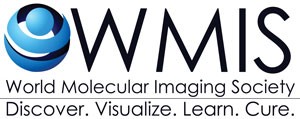Antibodies can be produced to recognize essentially any target of interest with nanomolar affinity, making them an ideal class of molecules for the generation of molecular imaging agents. However, the use of classic mouse monoclonals for in vivo imaging has many limitations including immunogenicity, slow kinetics and clearance, etc. Recently, antibody engineering has been harnessed to produce targeting agents based on humanized and human antibodies, with tailored pharmacokinetics for rapid imaging. Antibodies can be engineered for site-specific conjugation and labeling, and clearance can be directed through hepatic or renal routes. When labeled with positron-emitting radionuclides (such as I-124, Zr-89, Cu-64, F-18), engineered antibody fragments can be employed for high resolution, sensitive, quantitative imaging by PET. ImmunoPET can be utilized for phenotypic assessment of cells and tissues in living organisms, including patients, in oncology and other diseases. Antibody-based imaging can also be applied to detection of immune cell subsets (such as CD8 T cells or macrophages), for monitoring immune responses. ImmunoPET provides a broad approach for imaging cell surface phenotype in vivo, and stands to play an expanding role in the detection and management of cancer and other diseases, for assessing key factors such as target expression, internalization and catabolism, and response to therapy and mechanism of response. Molecular imaging applications of engineered antibodies have been extended to incorporation of optical tags, by dye conjugation or generation of fusion proteins. Finally, engineered antibodies provide a versatile platform for development of targeted multimodal imaging agents including nanoparticle-based diagnostics and therapeutics.
Development of antibody-based probes for molecular imaging
Anna Wu, Professor, Department of Molecular and Medical Pharmacology, Crump Institute for Molecular Imaging, David Geffen School of Medicine at UCLA, Los Angeles, CA, USA
Learning Objectives:
- Delineate ideal properties of an antibody-based imaging agent
- Evaluate suitability of cell surface biomarkers as imaging targets
- Compare radiolabeling isotopes and methods for imaging applications
Monclonal Antibodies, Antibody Fragments and Peptides
Nick Devoogdt, ICMI, Brussels, Belgium
Antibodies are professional antigen-binding molecules that are present in all mammals as part of their natural host immune system. As such they can be used to target membrane receptors and soluble proteins for imaging applications in preclinical models and in patients. Through biotechnological methods, antibodies can be further reformatted into smaller molecules such as scFv’s, diabodies. minibodies and nanobodies. Antibodies and derivative fragments have their particular properties in regard to protein structure, size, stability, affinity, specificity and pharmacologic behavior. In this session we will further evaluate their labeling methods and technologies to isolate binders of interest. Finally, we will discuss important aspects to progress an antibody-derived imaging tracer into clinical translation.
Learning Objectives:
- Discover the power of antibodies and antibody fragments for biotechnological applications, biomedical research and clinical programs.
- Understand the relationship between antibody/fragment structure, biochemical and pharmacokinetic properties.
- Learn about the art to generate imaging tracers derived from antibodies and its engineered fragments.
Imaging Using Affibody Molecules
Vladimir Tolmachev, Biomedical Radiation Sciences, Uppsala University, Sweden
Affibody molecules are a new class of small (6-7 kDa) affinity proteins based on a three-helical scaffold. Randomization of 13 amino acids on the surfaces of helices 1 and 2 provides large (>1010 members) libraries enabling molecular-display selection of binders. The robust Affibody scaffold enables high affinity of selected proteins. Affibody molecules with picomolar affinity have been developed for binding to such therapeutic cancer associated targets as HER2, EGFR, HER3, IGF-1Rand PDGFRβ. Di- and multimeric forms of Affibody molecules and fusion proteins can be easily produced by recombinant expression in E. coli. Since the Affibody scaffold does not contain cysteine, a unique cysteine residue can be introduced in a desirable position allowing site-specific coupling of prosthetic groups or chelators using thiol-directed chemistry. Monomeric forms of Affibody molecules can be made by peptide synthesis allowing site specific incorporation of chelators or prosthetic groups as well as unnatural amino acids. Some of the key features of Affibody molecules is very rapid (3 µS) refolding at physiological pH and molarity, and reduced renal uptake and rapid clearance from the kidneys, which broaden their use for therapeutic applications. The use of near-infrared fluorescent dyes or fusion with fluorescent proteins facilitates optical in vivo imaging using Affibody molecules. Furthermore, Affibody molecules can also be used for specific targeting of different Nano carriers, such as liposomes or SPIO.
Learning Objectives:
- Scaffold structure of Affibody molecules permits obtaining of robust binding proteins with subnanomolar affinities.
- Robust structure of Affibody molecules permits efficient labeling in harsh conditions (pH range of 3.6-11.5; temperature up to 100°C, presence of lipophilic solvents) without losing binding capacity.
- Small size (6-7 kDa) of Affibody molecules enables rapid extravasation and tumor penetration, and rapid clearance of unbound tracer; permitting high contrast imaging shortly after injection.
- Rich labeling chemistry permits optimizing of bio distribution of Affibody molecules and increasing of imaging contrast.
- Clinical studies demonstrated that Affibody molecules can image HER2-expressing breast cancer metastases with high sensitivity.
